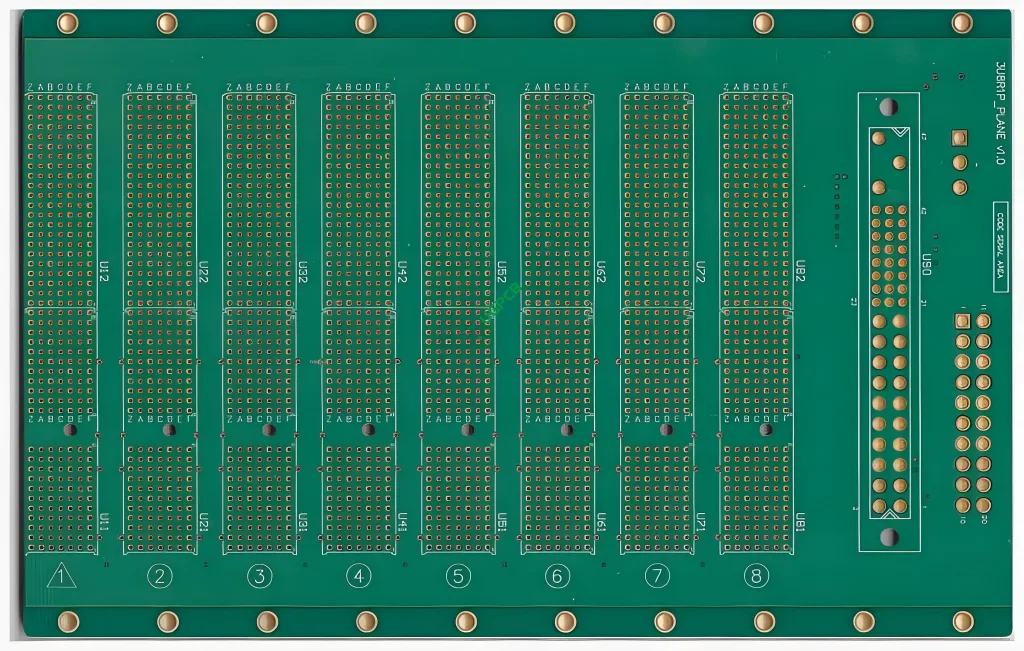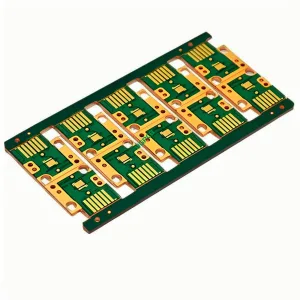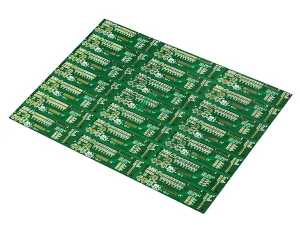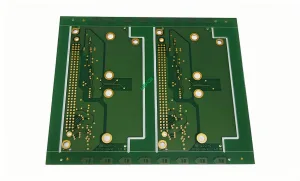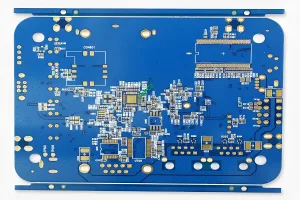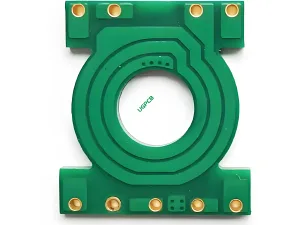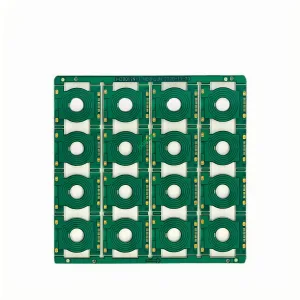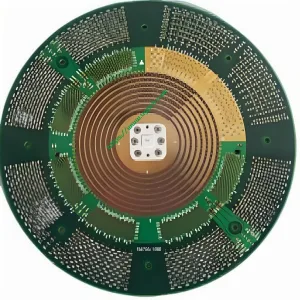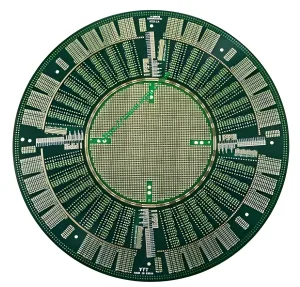소개 24 계층 통신 백플레인 PCB
그만큼 24 레이어 통신 백플레인 PCB는 복잡한 통신 시스템을 위해 설계된 고성능 인쇄 회로 보드입니다.. 강력한 연결성과 안정적인 신호 전송을 제공하도록 설계되었습니다., 고급 통신 응용 프로그램에 이상적입니다.
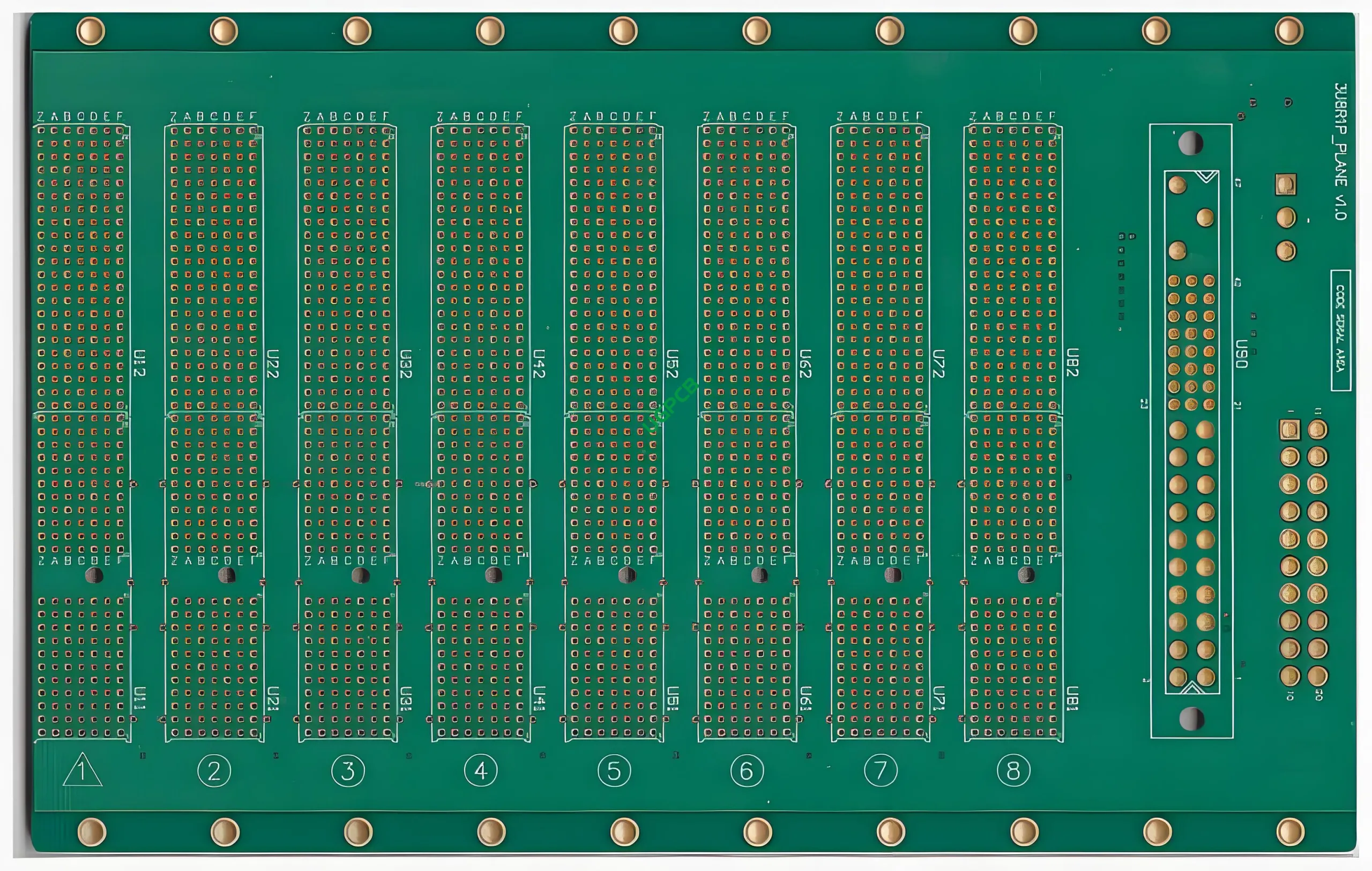
무엇입니까? 24 계층 통신 백플레인 PCB?
에이 24 레이어 통신 백플레인 PCB는 특별히 설계된 다층 인쇄 회로 보드를 나타냅니다. 24 유전체 층으로 분리 된 전도성 재료의 층. 이 구조는 신호 무결성을 유지하고 간섭을 최소화하면서 고밀도 상호 연결성을 허용합니다..
설계 요구 사항
a 24 계층 통신 백플레인 PCB는 중요한 통신 시스템에서의 응용으로 인해 엄격합니다.. 주요 설계 고려 사항에는 포함됩니다:
- 재료: 파나소닉 M6, 우수한 열 및 전기 특성으로 유명합니다.
- 레이어 수: 24 복잡한 라우팅 요구를 수용하기위한 레이어.
- 색상: 쉽게 식별하고 미적 호소를위한 파란색/흰색.
- 완성된 두께: 2.0MM은 지나치게 부피가 크지 않고 구조적 무결성을 보장합니다.
- 구리 두께: 1적절한 전도도를 제공하는 오즈.
- 표면 처리: 침지 금은 납땜 가능성 및 부식성을 향상시킵니다.
어떻게 작동하나요??
그만큼 24 층 통신 백플레인 PCB는 유전체 재료로 분리 된 여러 층의 구리 트레이스를 사용하여 작동합니다.. 이 층은 도금 된 홀을 통해 상호 연결됩니다 (PTHS) 또는 vias, 신호가 다른 층 사이를 이동하도록 허용합니다. 침지 금 표면 처리는 구리 추적이 전도성을 유지하고 산화에 내성을 유지하도록합니다..
응용
의 1 차 적용 24 레이어 통신 백플레인 PCB는 고속 데이터 전송 및 안정적인 연결성이 중요한 통신 백플레인. 이 PCB는 사용됩니다:
- 통신 인프라
- 데이터 센터
- 고주파 통신 장치
- 네트워킹 장비
분류
기능 및 응용 프로그램을 기반으로합니다, 그만큼 24 레이어 통신 백플레인 PCB는 고중도 PCB로 분류 할 수 있습니다.. 이 분류는 현대 통신 시스템에 필요한 복잡하고 조밀 한 회로 설계를 처리 할 수있는 기능을 강조합니다..
재료 구성
에 사용 된 핵심 자료 24 레이어 통신 백플레인 PCB는 Panasonic M6입니다, 우수한 기계식으로 알려진 고성능 라미네이트 재료, 열의, 및 전기 특성. 이 자료는 PCB가 고속 통신 응용 프로그램의 요구를 견딜 수 있도록합니다..
성능 특성
의 성능 특성 24 레이어 통신 백플레인 PCB 포함:
- 높은 신호 무결성
- 낮은 신호 손실
- 우수한 열 관리
- 향상된 기계적 강도
- 신뢰할 수있는 장기 안정성
구조적 세부 사항
의 구조적 세부 사항 24 레이어 통신 백플레인 PCB는 다음과 같습니다:
- 레이어 수: 24 레이어
- 완성된 두께: 2.0mm
- 구리 두께: 1온스
- 최소 트레이스 너비: 6밀 (0.15mm)
- 흔적 사이의 최소 공간: 6밀 (0.15mm)
- 표면 처리: 이머젼 골드
특징 및 이점
주요 특징과 이점 24 레이어 통신 백플레인 PCB 포함:
- 고밀도 상호 연결성
- 우수한 신호 무결성
- 강력한 기계적 구성
- 신뢰할 수있는 장기 성능
- 미적 색상 옵션 (블루/화이트)
생산 과정
의 생산 과정 24 레이어 통신 백플레인 PCB에는 여러 단계가 포함됩니다, 포함:
- 재료 선택: 고품질 파나소닉 M6 재료 선택.
- 레이어 스태킹: 배열 24 정밀한 레이어.
- 에칭: 과도한 구리를 제거하여 원하는 트레이스 패턴을 형성합니다.
- 도금: 침지금 표면 처리 적용.
- 집회: 레이어 상호 연결을 위해 PTH 및 VIAS를 통합합니다.
- 테스트: PCB가 모든 성능 사양을 충족하는지 확인합니다.
사용 사례
그만큼 24 레이어 통신 백플레인 PCB는 다양한 시나리오에서 사용됩니다, ~와 같은:
- 고속 데이터 전송 네트워크
- 통신 인프라 프로젝트
- 고급 네트워킹 장비
- 높은 대역폭이 필요한 데이터 센터 응용 프로그램
요약하면, 그만큼 24 레이어 커뮤니케이션 백플레인 PCB는 현대 통신 시스템의 까다로운 요구 사항을 충족하도록 설계된 정교하고 신뢰할 수있는 구성 요소입니다.. 고밀도 디자인, 우수한 성능 특성, 강력한 구성은 모든 고급 통신 설정의 필수 부분입니다..
 UGPCB 로고
UGPCB 로고

